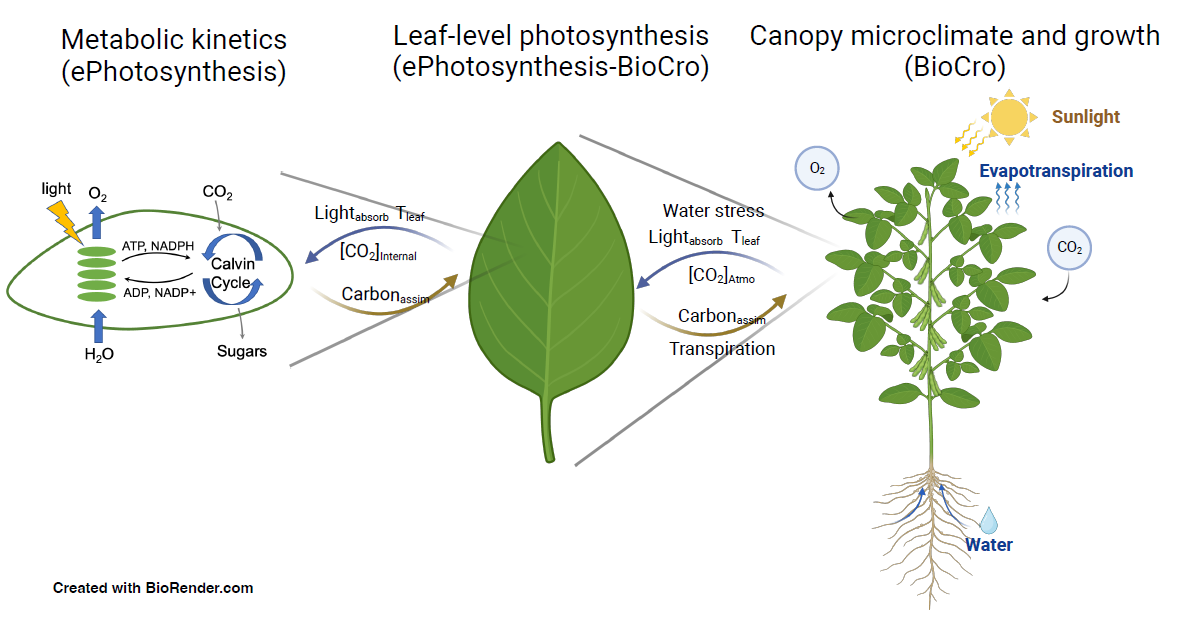RIPE team models connection between enzyme activity and yields for the first time
A team from the University of Illinois has developed a modeling framework connecting enzyme activity related to photosynthesis to yield. This is the first time a model has tied the dynamic photosynthetic pathways directly to crop growth.
“A previous model coupled data from the genetic, metabolic, and leaf levels, but we needed to connect the metabolic level to the greater canopy level,” said Yufeng He, a postdoctoral researcher in the Matthews Group at Illinois. “The new model allows us to examine how changes in enzyme activities can affect yield by better connecting the environmental variation experienced by the crops in the field to the metabolic processes.”
This work is part of Realizing Increased Photosynthetic Efficiency (RIPE), an international research project that is engineering crops to be more productive by improving photosynthesis, the natural process all plants use to convert sunlight into energy and yields. RIPE’s research in this area received support from the Bill & Melinda Gates Foundation, Foundation for Food & Agriculture Research, U.K. Foreign, Commonwealth & Development Office, and Bill & Melinda Gates Agricultural Innovations (Gates Ag One).
In a recent study, published in in silico Plants, He and others show how their model will positively impact the ability of scientists to accurately simulate crop growth. Previously, scientists wanting to simulate field experiments had to treat the process of photosynthesis, and the associated enzyme activities, as if the plant were in steady-state. For anyone who has been in a crop field, that is a very unrealistic measure.

“Plants don’t exist in a stable environment. We can use this work to study the sensitivity of enzymes under different environmental conditions,” said Megan Matthews, principal investigator for the RIPE Project and assistant professor in civil and environmental engineering at Illinois. “The model will allow us to see which photosynthetic enzymes are limiting in different environments, and how they can lead to yield gain under long-term climatic conditions.”
The model’s ability to understand which enzymes can be limiting and connect this to expected yield comes from representing photosynthesis as a detailed series of dynamic enzyme reactions, rather than a simplified representation of a few reactions at steady-state. An additional benefit of this model is that it could be used to explore non-steady-state photosynthetic responses, such as when shade from cloud cover or other leaves moving in the wind can cause a plant to start or stop photosynthesis throughout a day. Previous models that did treat photosynthesis as a dynamic process weren’t able to scale up to crop growth at the field level.
“Scaling up from the metabolite level to the field level represents a pivotal advancement towards achieving a more accurate simulation of photosynthesis and crop growth,” said He. “Our coupled model holds promise for enhancing our comprehension of enzymatic dynamics and crop physiology. Furthermore, its future applications will assist in improving crop management strategies, fostering sustainable agriculture practices, and bolstering food security amidst global challenges.”
He and Matthews hope that their model, available open source on Github, can help researchers better understand and better predict how specific enzymes affect crop growth and yield in different environments.
